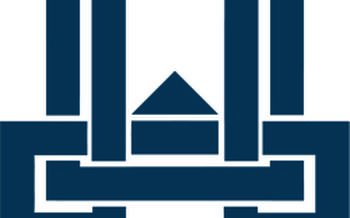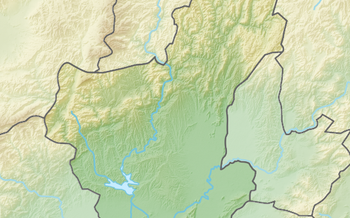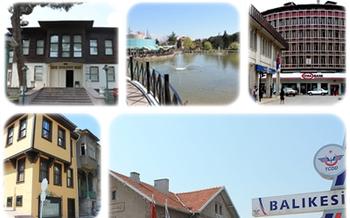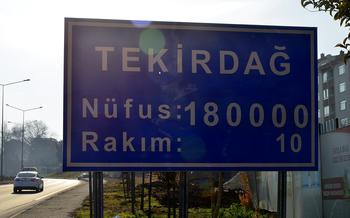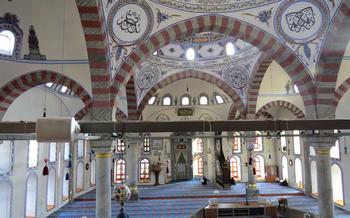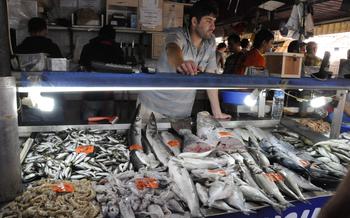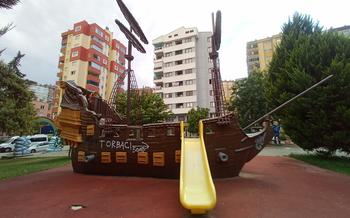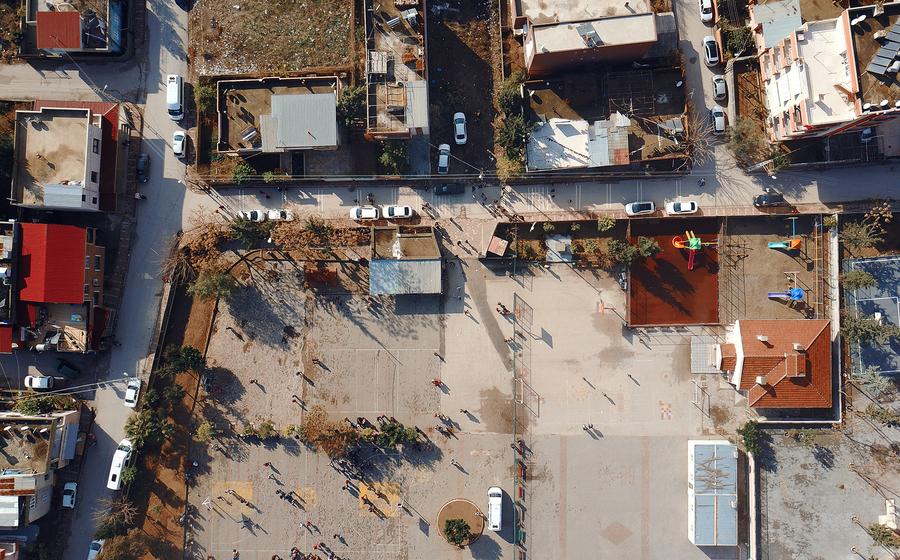
Döşeme Mosque
- Historical Significance
- Architectural Marvel
- Religious Importance
- Visiting the Mosque
- Exploring the Interior
- Admiration for the Craftsmanship
- Photography Tips:
- Local Traditions and Customs
- Learning about Islamic Architecture
- Respectful Behavior
- Exploring the Neighborhood
- Visiting as a Non-Muslim
- Supporting Local Craftsmanship
- Insider Tip: Unveiling the Hidden Gem
Historical Significance
The Döşeme Mosque stands as a testament to the rich history and cultural heritage of Adana. Built by the Seljuk Sultan Melikşah in 1079 AD, it is one of the oldest mosques in Turkey and a prominent example of Seljuk architectural style. Its name, Döşeme, meaning "paved" in Turkish, originates from the unique pavement that adorned its courtyard, showcasing the intricate craftsmanship of the Seljuk era. The mosque's historical significance extends beyond its architectural beauty, as it has served as a center of worship and a gathering place for the Muslim community of Adana for centuries. Its enduring legacy makes it a must-visit destination for anyone interested in the history and culture of Turkey.
Architectural Marvel
The Döşeme Mosque stands as a testament to the ingenuity and artistry of Seljuk architecture. Its intricate details and design elements make it a masterpiece of Islamic architecture. The mosque's exterior is adorned with stunning tilework, intricate carvings, and beautiful calligraphy. The main entrance, known as the pishtaq, is particularly impressive with its pointed arch and decorative motifs. The minaret, a slender and graceful tower, rises high above the mosque and is a distinctive feature of the skyline. The use of stone and brick in the construction of the mosque adds to its beauty and durability. The harmonious blend of these materials creates a stunning visual effect that is both elegant and awe-inspiring.
Religious Importance
The Döşeme Mosque holds immense religious significance for Muslims in Adana. It serves as a central place of worship, where the faithful gather for daily prayers and congregational gatherings. The mosque's spacious prayer hall, adorned with intricate carvings and beautiful calligraphy, creates a serene and spiritual atmosphere for worshippers.
The mosque is particularly important during the holy month of Ramadan, when Muslims observe fasting and engage in special prayers and religious practices. During this time, the mosque's interior is decorated with colorful lights and ornaments, and the atmosphere is filled with a sense of devotion and camaraderie.
Beyond its role as a place of worship, the Döşeme Mosque is deeply intertwined with the lives of the local community. It serves as a venue for religious education, social gatherings, and community events. The mosque's courtyard is often used for hosting community meetings, lectures, and celebrations, fostering a sense of unity and belonging among the local residents.
Visiting the Mosque
To reach the Döşeme Mosque, visitors can take advantage of the city's well-connected public transportation system or opt for the convenience of a taxi or ride-sharing service. The mosque is situated in the heart of Adana, making it easily accessible from various parts of the city.
As for the ideal time to visit, it is recommended to plan your visit during the early morning or late afternoon to avoid the midday heat and capture the most favorable lighting conditions for photography. Additionally, it is important to be mindful of the mosque's prayer times, as it remains closed to visitors during these periods.
When visiting the Döşeme Mosque, it is essential to adhere to the local customs and dress code out of respect for the religious significance of the site. Visitors are expected to dress modestly, with shoulders and knees covered, and women may be required to cover their hair. It is also customary to remove shoes before entering the mosque, and visitors are provided with plastic bags to store their footwear.
Exploring the Interior
The interior of the Döşeme Mosque is a testament to the skill and artistry of the Seljuk craftsmen. The spacious prayer hall is adorned with intricate carvings and beautiful calligraphy, creating a serene and awe-inspiring atmosphere. The mihrab (prayer niche), the focal point of the mosque, is a masterpiece of Islamic art, with its delicate carvings and colorful tiles. The minbar (pulpit), from which the imam delivers his sermons, is another remarkable feature of the mosque, with its intricate woodwork and decorative elements. The qibla (direction of prayer) is indicated by a small niche in the wall, which is aligned towards Mecca. This precise alignment is a reminder of the mosque's importance as a place of worship and its connection to the wider Islamic world.
Admiration for the Craftsmanship
The Döşeme Mosque stands as a testament to the exceptional skill and craftsmanship of its builders. The intricate tilework that adorns the interior and exterior of the mosque is a masterpiece of Islamic art. The tiles, each meticulously hand-painted, depict intricate geometric patterns and verses from the Quran, creating a mesmerizing visual display.
The carvings on the mosque's walls and columns showcase the artistry of the Seljuk craftsmen. The intricate designs, featuring stylized floral motifs and calligraphy, lend an air of elegance and refinement to the mosque's interior. The minbar, or pulpit, is a particularly striking example of Seljuk craftsmanship, with its intricate carvings and inlaid mother-of-pearl decorations.
The calligraphy that adorns the mosque's interior is another testament to the skill of the craftsmen. The verses from the Quran, written in beautiful Arabic script, add to the mosque's spiritual and aesthetic appeal. The qibla, or direction of prayer, is marked by a beautifully carved mihrab, or prayer niche, which is the focal point of the mosque's interior.
The Döşeme Mosque is a true masterpiece of Islamic architecture, and its intricate craftsmanship is a testament to the skill and dedication of the artisans who built it. Preserving such historical and cultural treasures is crucial for future generations to appreciate and learn from the rich heritage of Islamic art and architecture.
Photography Tips:
Capturing the beauty of the Döşeme Mosque through photography is a rewarding experience. To ensure you capture stunning shots, consider the following tips:
-
Golden Hour Magic: Plan your visit during the golden hours, just after sunrise or before sunset, when the warm, diffused light beautifully illuminates the mosque's exterior.
-
Composition and Angles: Experiment with different angles and compositions to create dynamic shots. Try capturing the mosque's grandeur from a low angle or highlight its intricate details with close-up shots.
-
Interior Masterpieces: Inside the mosque, focus on the intricate carvings, tilework, and calligraphy. Use natural light to enhance the beauty of these details.
-
Symmetry and Reflections: The mosque's symmetrical architecture offers many opportunities for striking shots. Look for reflections in the courtyard pool or capture the mosque's silhouette against the evening sky.
-
Respectful Photography: Remember to be respectful during your photoshoot. Avoid using flash photography, which can be disruptive during prayers. Also, seek permission before photographing people.
Local Traditions and Customs
The Döşeme Mosque holds a special place in the hearts of the local people of Adana. It is not just a place of worship but also a symbol of their cultural heritage and identity. Many local traditions and customs are associated with the mosque that reflects the deep connection between the community and their faith.
During the holy month of Ramadan, the mosque comes alive with special prayers, recitations, and gatherings. The faithful gather at the mosque to break their fast together and offer special prayers known as "Tarawih." The mosque's courtyard is adorned with colorful lanterns and decorations, creating a festive atmosphere.
On the occasion of religious festivals such as Eid al-Fitr and Eid al-Adha, the mosque becomes the center of celebrations. People dress in their finest clothes and gather at the mosque to offer prayers and exchange greetings. The mosque is also a venue for religious ceremonies such as weddings and funerals, where the community comes together to share important moments in their lives.
The Döşeme Mosque is not just a place for religious observances but also a place for community gatherings and social interactions. People often meet in the mosque's courtyard to discuss local issues, share stories, and catch up on each other's lives. The mosque serves as a focal point for the community, fostering a sense of unity and belonging among its members.
Learning about Islamic Architecture
The Döşeme Mosque serves as a captivating example to comprehend the fundamental principles of Islamic architecture. The mosque's design embodies the essence of Islamic aesthetics, characterized by the strategic use of geometric patterns, arches, and domes. These elements combine to create a harmonious and visually stunning space that reflects the rich cultural and religious heritage of the Islamic world.
-
Geometric Patterns: The Döşeme Mosque showcases intricate geometric patterns that adorn its walls, floors, and ceilings. These patterns, often featuring repeating motifs and tessellations, represent the Islamic emphasis on order, balance, and symmetry. The patterns serve not only as decorative elements but also as a testament to the mathematical and scientific advancements of Islamic civilization.
-
Arches: The mosque's elegant arches, both pointed and rounded, create a sense of grandeur and spaciousness. These arches, often embellished with intricate carvings and calligraphy, provide structural support while adding a touch of artistic flair. The arches symbolize the transition from one space to another, representing the journey from the mundane world to the sacred realm of the mosque.
-
Domes: The Döşeme Mosque features a prominent dome that crowns the prayer hall, symbolizing the heavens and the divine presence. The dome's intricate patterns and designs reflect the celestial bodies and the interconnectedness of the universe. The dome's soaring height and graceful curves create a sense of awe and inspiration, drawing the worshipper's attention towards the heavens.
Respectful Behavior
When visiting the Döşeme Mosque, it is crucial to maintain respectful behavior to honor the religious significance of the site. Before entering the mosque, remove your shoes and place them neatly on the designated shoe racks. This act symbolizes purification and respect for the sacred space. Once inside, maintain silence and refrain from engaging in loud conversations or using mobile phones. While admiring the mosque's beauty, avoid touching or leaning against the walls, as this may be seen as disrespectful. Respect the privacy of worshippers by avoiding taking photographs of them without their permission. By observing these simple guidelines, you can ensure a harmonious and respectful visit to the Döşeme Mosque.
Exploring the Neighborhood
After immersing yourself in the history and beauty of the Döşeme Mosque, take some time to explore the surrounding neighborhood and discover its hidden gems. Just a short walk away, you'll find the historic Adana Bazaar, a vibrant marketplace where you can browse for traditional Turkish handicrafts, spices, and souvenirs. The bazaar is a feast for the senses, with its colorful stalls, aromatic scents, and friendly vendors.
Step back in time as you wander through the narrow streets of the old city, where charming Ottoman-era houses stand side by side with modern buildings. Admire the intricate carvings and architectural details that adorn the facades of these historic structures, each telling a story of Adana's rich past.
For a taste of local cuisine, head to one of the many restaurants and cafes in the area. Indulge in mouthwatering kebabs, freshly baked pide bread, and sweet Turkish desserts. As you savor the flavors of Adana's culinary delights, take a moment to soak in the vibrant atmosphere and the friendly hospitality of the local people.
Visiting as a Non-Muslim
As a non-Muslim visitor, you are welcome to visit the Döşeme Mosque and appreciate its architectural and historical significance. The mosque is open to visitors of all faiths, and there are no restrictions on who can enter. However, it is important to be respectful of the mosque's religious significance and to observe local customs and etiquette.
When visiting the mosque, please dress modestly and remove your shoes before entering the prayer hall. You should also maintain silence and avoid disturbing those who are praying. Non-Muslims are not allowed to participate in the prayers or religious ceremonies, but you are welcome to observe them from a distance.
If you have any questions or concerns about visiting the mosque as a non-Muslim, please do not hesitate to ask a member of the mosque staff or a local guide. They will be happy to assist you and ensure that you have a positive and respectful experience.
Supporting Local Craftsmanship
The Döşeme Mosque is a testament to the skill and craftsmanship of the local artisans and builders who constructed it centuries ago. Visitors to the mosque can appreciate the intricate tilework, carvings, and calligraphy that adorn its interior and exterior. These decorative elements are not only visually stunning but also hold cultural and historical significance.
By supporting local craftsmen and artisans, visitors can help preserve traditional techniques and crafts that are an integral part of Turkey's cultural heritage. There are several ways to do this. Visitors can purchase handmade souvenirs or crafts related to the Döşeme Mosque from local shops or artisans. These items can serve as beautiful reminders of their visit and support the livelihoods of local craftsmen.
Appreciating the value of handmade goods and the skills of local artisans is essential for preserving cultural traditions and promoting sustainable tourism. Visitors to the Döşeme Mosque can play a role in supporting local craftsmanship by choosing to purchase authentic, handmade souvenirs and crafts that reflect the mosque's rich history and cultural significance.
Insider Tip: Unveiling the Hidden Gem
Beyond the main tourist areas of the Döşeme Mosque lies a hidden gem that often goes unnoticed by visitors. Tucked away in a secluded corner of the mosque, discover a small, unassuming door that leads to a hidden chamber. This secret room, known only to a few, houses a collection of ancient artifacts and manuscripts that tell the fascinating story of the mosque's past. Among these treasures, you'll find a rare handwritten Quran dating back to the 13th century, beautifully illuminated with intricate calligraphy and adorned with gold leaf. This hidden chamber offers a glimpse into the rich history of the Döşeme Mosque and provides a unique opportunity to connect with its spiritual and cultural heritage.
